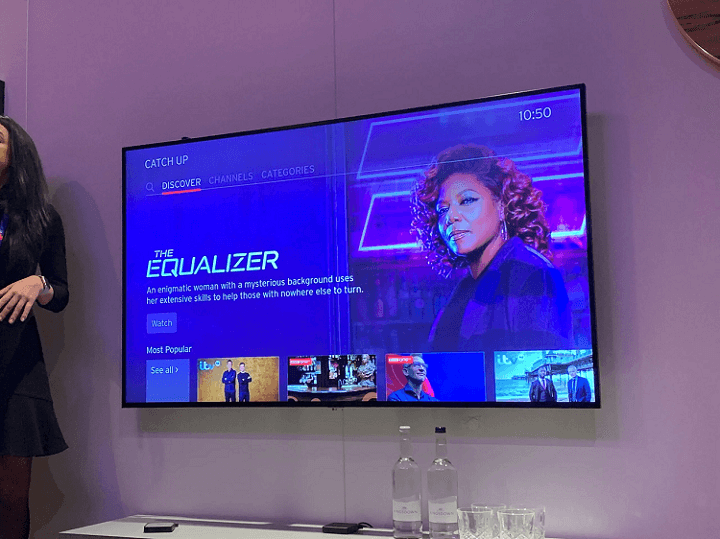Future Trends in the OTT Industry
The future trends in the OTT industry are set to redefine how content is consumed and monetized across the globe. As technology evolves and consumer preferences shift, OTT platforms must adapt to remain competitive in an ever-changing landscape. This blog post will explore the major trends shaping the OTT industry, including advancements in technology, changes in consumer behavior, and the impact of emerging markets.
The Rise of Personalized Content
Personalized content is rapidly becoming a hallmark of successful OTT platforms. With the advent of sophisticated algorithms and artificial intelligence, platforms can now analyze user data to tailor recommendations, enhancing the viewing experience significantly. This trend is not just about suggesting what to watch next; it’s about creating a unique viewing journey for each user.
Data-Driven Recommendations
The use of data analytics in content recommendation is transforming viewer engagement. Platforms like Netflix and Hulu have invested heavily in machine learning to analyze user preferences, viewing habits, and even social media interactions. This allows them to provide personalized suggestions that keep users engaged longer. According to a study by McKinsey, about 70% of viewers are more likely to watch content that is recommended to them based on their viewing history.
Content Creation Based on Viewer Preferences
The demand for personalized content is also influencing the types of shows and movies being produced. OTT platforms are increasingly investing in original content that caters to specific audience segments. For example, platforms like Amazon Prime Video and Disney+ have commissioned shows based on genre trends, demographic insights, and even cultural phenomena. This data-driven approach ensures that the content resonates with viewers, thereby increasing subscription retention rates.

The Growth of Live Streaming
Live streaming is another major trend that is reshaping the OTT landscape. As audiences seek real-time engagement, platforms that offer live content are gaining traction. This trend is evident in various sectors, including sports, news, and entertainment.
The Popularity of Live Sports Broadcasting
Live sports have become a critical component of many OTT offerings. With traditional cable subscriptions declining, sports fans are turning to platforms like ESPN+ and DAZN for live broadcasts. These services not only provide access to live games but also offer interactive features, such as real-time statistics and social media integration. This shift is prompting traditional broadcasters to adapt their strategies to include OTT options for sports fans, creating more competition in the market.
Events and Experiences in Real-Time
Beyond sports, live streaming of events like concerts, conferences, and gaming tournaments is on the rise. Platforms such as Twitch and YouTube Live have capitalized on this trend, offering viewers the chance to engage with content creators and artists in real time. This interactive element fosters a sense of community among viewers, further enhancing the OTT experience.
The Expansion of Global Markets
The OTT industry is experiencing significant growth not just in established markets but also in emerging ones. This trend is primarily driven by increased internet penetration, the proliferation of smart devices, and changing consumer habits.
The Emergence of Local Content
As OTT platforms expand into new regions, the demand for localized content is growing. Services like Netflix and Amazon Prime are investing in regional productions to cater to diverse audiences. For instance, Netflix has produced numerous original series in languages like Spanish, Korean, and Hindi, appealing to local tastes while also garnering international attention. This strategy not only helps in user acquisition but also enhances brand loyalty among diverse consumer bases.
The Role of Mobile Streaming
Mobile streaming is becoming increasingly popular, especially in developing countries. With the rise of affordable smartphones and mobile data plans, consumers are more willing to access content on their devices. Platforms are optimizing their services for mobile viewing, ensuring that users have a seamless experience regardless of their location. This trend is particularly evident in regions like Southeast Asia and Africa, where mobile-first strategies are crucial for growth.
Conclusion
In conclusion, the future trends in the OTT industry point toward a more personalized, engaging, and globally inclusive landscape. As technology continues to evolve and consumer preferences shift, platforms must adapt to meet the growing demand for innovative content delivery methods. With the rise of personalized content, live streaming, and the expansion into global markets, the OTT industry is poised for significant transformation in the coming years.
For more insights on the evolving OTT landscape, you can check out Variety’s coverage on OTT trends.



